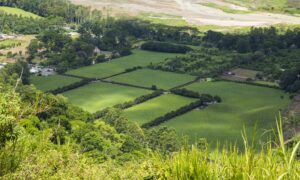Artificial turf, also known as synthetic grass, has emerged as a revolutionary alternative to natural grass in various applications, from sports fields to residential landscapes. This article explores the world of artificial turf, highlighting its benefits, versatility, and impact on our outdoor spaces.
The Evolution of Artificial Turf
Artificial turf has come a long way since its inception in the mid-20th century. Initially developed for sports fields, it has evolved into a versatile landscaping solution. Today’s artificial turf closely mimics the look and feel of natural grass, making it challenging to distinguish between the two at a glance.
Year-Round Greenery
One of the most significant advantages of artificial turf is its ability to provide lush, green landscapes year-round. Unlike natural grass, which can become brown and patchy during droughts or cold seasons, artificial turf maintains its vibrancy regardless of weather conditions. This consistent greenery is especially valuable in arid regions or areas with extreme climates.
Low Maintenance Bliss
Artificial turf offers a respite from the never-ending cycle of lawn care. Say goodbye to mowing, fertilizing, and constant watering. With minimal maintenance requirements, such as occasional sweeping or rinsing, you can enjoy a perfectly manicured lawn without the hassle of traditional upkeep.
Environmental Considerations
While artificial turf offers many benefits, it’s essential to consider its environmental impact. Manufacturing synthetic grass involves materials like plastic and rubber, which can have ecological consequences. However, some environmentally conscious options incorporate recycled materials into their production process, mitigating these concerns.
Versatility in Applications
Artificial turf’s versatility knows no bounds. It’s not limited to residential lawns alone. The material finds applications in sports fields, golf courses, rooftop gardens, playgrounds, and commercial landscapes. Its adaptability makes it a valuable choice for a wide range of outdoor spaces.
Ideal for Play and Sports
Artificial turf has become the surface of choice for sports fields and playgrounds. It offers excellent shock absorption, reducing the risk of injuries during physical activities. Its consistent surface allows for smoother ball movement and enhances gameplay, making it popular in sports like soccer, football, and golf.
Pet-Friendly Landscaping
Pet owners can appreciate the benefits of artificial turf. It’s resistant to urine and easily washable, making it a convenient and pet-friendly option. Furry friends can enjoy the outdoors without turning your lawn into a muddy mess.
Longevity and Durability
Investing in artificial turf means investing in longevity. Quality synthetic grass can last for many years, even under heavy foot traffic or intense sun exposure. Its durability makes it a cost-effective choice in the long run.
Heat Considerations
One aspect to consider with artificial turf is its heat retention on hot days. The material can become quite warm, making it less comfortable for barefoot activities. Some newer artificial turf options come equipped with cooling technology to mitigate this issue.
An Aesthetic Enhancement
Beyond its practical advantages, artificial turf offers an aesthetic enhancement to outdoor spaces. Its lush, green appearance creates a welcoming ambiance, whether in residential gardens or commercial landscapes. Additionally, the absence of weeds and patches contributes to a polished and manicured look.
In conclusion, artificial turf has revolutionized the way we approach landscaping and outdoor activities. Its year-round greenery, low maintenance requirements, and versatility have made it a popular choice for homeowners, sports facilities, and various outdoor settings. While environmental considerations persist, ongoing innovation in synthetic grass production continues to address these concerns, paving the way for a greener and more sustainable future in outdoor design.



































